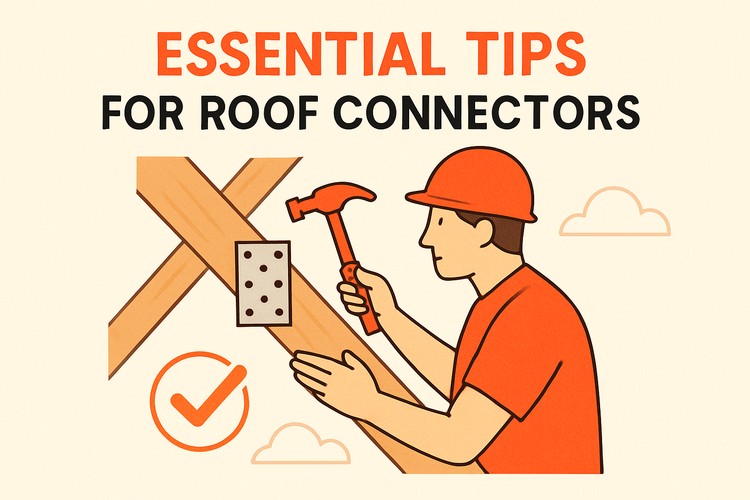Essential Tips For Roof Connectors In Construction

Choosing the Right Roof Connector for Your Project
When selecting roof connectors, understanding the specific requirements of your project is essential. Roof slope, load direction, timber type, and environmental exposure all play a role in determining the right hardware.
For optimal durability and performance, choose roof connectors that are compatible with your structural materials. Consider corrosion resistance, especially in coastal or high-moisture areas, and whether load requirements are met according to building codes. Products from the Roof Connectors category provide solutions tailored for a variety of roofing needs, including sloped or cross-laminated structures.
Proper Installation Techniques for Maximum Stability
Even the best roof connectors won't perform well unless installed correctly. Aligning the hardware with structural members and using the correct fasteners are critical steps in the process.
Always refer to manufacturer guidelines to ensure each component is fitted as intended. Improper nailing or misaligned anchorage can reduce the effectiveness of a connector by over 50%, compromising your roof's overall stability. Products like Joist Hangers or Post Base connectors should be secured with appropriate screws and nails from the recommended collection.
For complex roof structures where multiple angles converge, precision in aligning connectors becomes even more crucial. In these areas, using adjustable connectors or combining different types of anchors may be necessary to accommodate unique load paths. Installers should also ensure all substrates are free of rot, moisture, or debris that could weaken the bond between materials and fasteners.
Maintenance and Longevity of Roof Connectors
To extend the life of roof connectors, periodic inspections and maintenance are vital. Over time, exposure to the elements and structural movement can cause loosening or corrosion, especially in regions subject to temperature fluctuations or moisture buildup.
Maintenance mostly involves tightening loose fasteners, replacing rusted components, and ensuring sealing around the connectors remains intact. For timber structures, specifying parts from the Connectors for Glulam Timber collection can enhance longevity due to superior compatibility and corrosion-resistant finishes. Such maintenance not only protects hardware but also safeguards the overall structure.
It's a good practice to document all inspections and replacements to track wear patterns or identify recurring issues. This is especially important in commercial or larger residential projects where structural integrity over time is scrutinized. Using high-quality components in the initial build ensures fewer repairs and increased durability for decades.
Adapting to Environmental Load Requirements
Roof connectors must meet regional codes for snow load, wind uplift, and seismic activity. Failure to match these requirements can lead to structural failure under extreme weather conditions.
Depending on your locale, you may need highly durable components rated for high wind or snow zones. For such cases, exploring the High Wind ties & timber connectors collection is essential. These components are tested under intensified stress and are compatible with both engineered wood and traditional framing materials. Reinforcements such as hurricane ties and angle brackets add lateral and vertical strength, securing the structure from unexpected forces.
Local building codes often detail connector specifications for weather resistance, so always consult those standards. Additionally, environmental elements like coastal wind spray or snow accumulation on steeper roofs may require stainless-steel or galvanized finishes to prevent corrosion and ensure continued structural performance.
Pairing Roof Connectors With Restraint Strategies
Effective restraint is as important as load bearing in roofing design. Roof connectors should work in tandem with restraint solutions to distribute loads evenly and avoid displacement.
For timber-framed and engineered timber projects, restraint straps and angle brackets offer additional reinforcement across roof trusses and tie points. Using products from the Restraint Straps category ensures roofs remain stable under lateral pressure, especially in open-span or vaulted structures. These are essential in bridging structural weak points and maintaining roof-line alignment over time.
Where walls and roof trusses meet, anchoring the assembly with a combination of roof connectors and masonry ties or angle brackets will create a cohesive force shield. Properly integrated systems reduce the risk of torsion, uplift, and thermal deformation. Combining hardware allows builders to meet performance goals while ensuring longevity, safety, and visual integrity in both residential and commercial builds.
